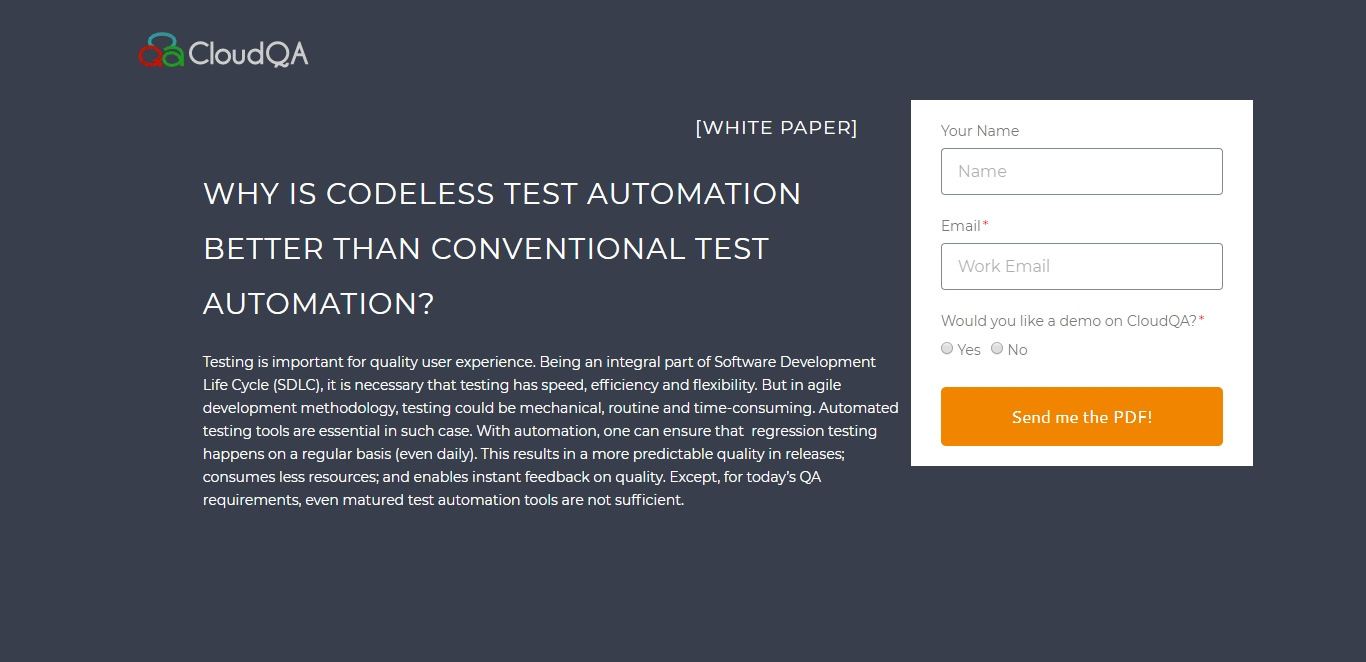7 Ways To Increase the Cost-Effectiveness Of DevOps Testing Automation
DevOps testing automation is the key to achieving the rapid delivery, scalability, security, collaboration, and monitoring that allows today’s agile teams to be highly productive.
Testing automation enables businesses to increase efficiency and improve ROI by:
- Shortening development cycles and implementation time.
- Reducing time-to-market.
- Increasing the productivity of business units and IT teams.
- Lowering cost associated with development and deployment.
- Streamlining workflow through process standardization.
- Minimizing human errors.
- Improving the quality, reliability, and reusability of system components.
However, having the ability to automate doesn’t mean you should automate anything and everything.
Since there’s an upfront investment in purchasing software, standardizing processes, programming automation, and providing employee training, it’s important that you’re implementing testing automation strategically to maximize cost-efficiency and optimize your ROI.
7 Ways To Increase the Cost-Effectiveness Of Testing Automation
Here’s how to get the most of DevOps testing automation:
1. Identify Workflows Involved
Take inventory of all the applications, data stores, and workflows in your development process. Identify common components (e.g., repetitive tasks) to decide which ones are worth investing the time and efforts to set up automation.
2. Select Processes To Automate
Select workflows that can benefit most from automation. For example, processes that are high in volume, require three or more users to execute manually, rely upon time-sensitive activities, and impact various systems are good candidates for automation. On the other hand, those that require human involvement at multiple decision points and show low ROI should not be automated.
3. Improve And Standardize Processes
The workflows you’re automating should be optimized so it’s as efficient as possible. After all, automating a flawed process just makes a bad workflow happen faster! Upon selecting the workflows to automate, review and fix any inefficiency before setting up automation.
4. Increase Test Coverage Gradually
Start your automation with the simplest workflows and repetitive tasks. Many of them may actually take up most of your testing time so prioritizing them can yield immediate ROI. This will also help you understand how to best utilize the automation software and allow your team to familiarize themselves with the testing tool.
5. Build Test Cases That Isolate Each Element
Create test cases such that each would test one aspect so it’ll be easy to identify what goes wrong when a test case fails. Also, build reusable components instead of bundling multiple tests. You can then reuse the logic in different test cases to minimize the time required to write new test cases.
6. Create Independent and Self-Contained Test Cases
Save time and increase productivity by creating test cases that aren’t dependent on each other so they can be scheduled and executed simultaneously across different environments. Test cases that need to be executed in a particular order can undermine the flexibility and agility of the QA process, which are the inherent benefits of automation.
7. Select the Right Testing Automation Tool
Choose a testing automation software with functionalities that can support all your current workflows and test cases. In addition, identify applications and technologies across the organization that are potential targets for automation so you can maximize the long-term ROI of your investment.
Look for a testing automation tool that:
- Uses a cloud-based platform to deliver scalable, reliable, and accessible services.
- Allows you to develop and maintain scripts quickly and easily.
- Enables continuous development, continuous integration, continuous testing, and continuous deployment.
- Provides cross-browser and cross-platform testing in various environments.
- Allows you to reuse functional scripts for multiple tests so you can save QA time and efforts.
- Supports keyword- and data-driven testing.
- Allows you to manage the complete QA lifecycle, from test generation to detailed reporting, all in one place.
- Offers 24/7 support, e.g., you can get help from customer service, self-service knowledge base, and user community.

Conclusion
Testing automation is key to lowering cost, improving QA efficiency, and shortening the development cycle. However, you need to plan and implement the process strategically in order to optimize the workflow and get the highest ROI.
In addition, when selecting a testing automation solution, it’s important to keep your organization’s unique circumstances and priorities in mind so you can create processes that meet your business objectives.
RECENT POSTS
Guides

How To Select a Regression Testing Automation Tool For Web Applications
Regression testing is an essential component in a web application development cycle. However, it’s often a time-consuming and tedious task in the QA process.

Switching from Manual to Automated QA Testing
Do you or your team currently test manually and trying to break into test automation? In this article, we outline how can small QA teams make transition from manual to codeless testing to full fledged automated testing.

Why you can’t ignore test planning in agile?
An agile development process seems too dynamic to have a test plan. Most organisations with agile, specially startups, don’t take the documented approach for testing. So, are they losing on something?

Challenges of testing Single Page Applications with Selenium
Single-page web applications are popular for their ability to improve the user experience. Except, test automation for Single-page apps can be difficult and time-consuming. We’ll discuss how you can have a steady quality control without burning time and effort.

Why is Codeless Test Automation better than Conventional Test Automation?
Testing is important for quality user experience. Being an integral part of Software Development Life Cycle (SDLC), it is necessary that testing has speed, efficiency and flexibility. But in agile development methodology, testing could be mechanical, routine and time-consuming.






